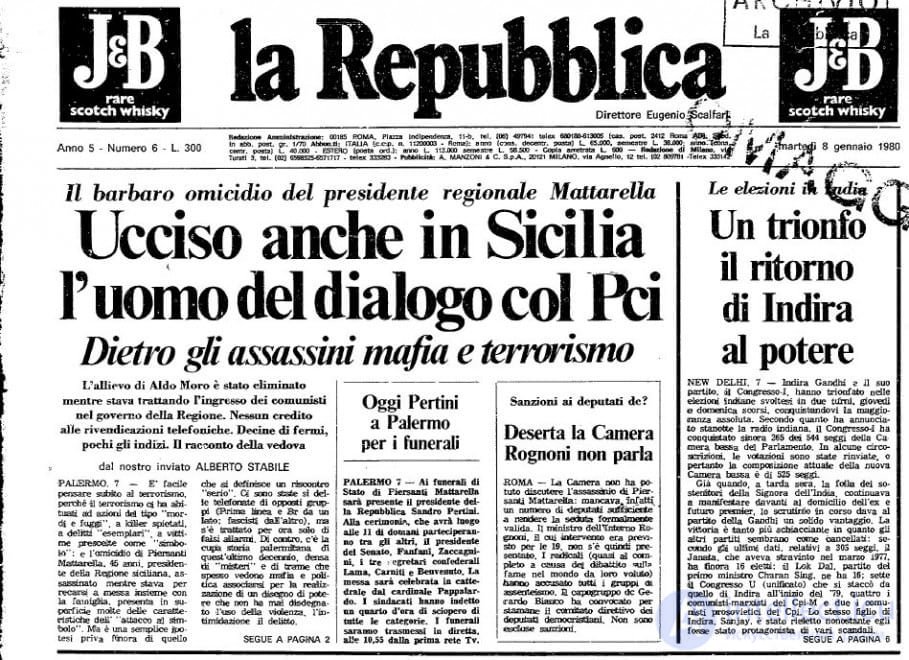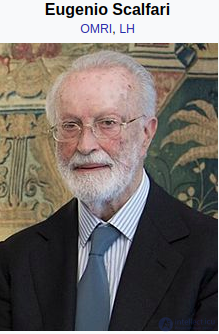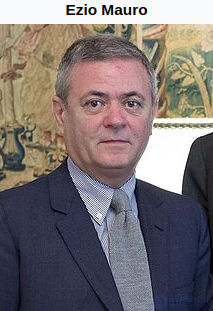Lecture
In January 1976, E. Scalfari was not yet 52 years old. Two decades ago, in 1955, he created Espresso and headed it. He was a member of the Italian Parliament. Had a great, long experience in political publications. entering the market, the newspaper is looking for something new, trying to identify their individual characteristics that will distinguish it from others. But at the same time she can not go against the traditions. Similarly, the "Repubblica". It is a national newspaper, therefore, it has all the features that are mandatory for this type of publications. First of all, it is the availability of universal information of national importance. Repubblica writes about events, incidents, changes that are important for the whole country, and not for a separate region. Another distinctive feature of the national edition - the spread across the country. Speaking about the scale of distribution, it should be noted that there is also such an indicator as the uniformity of distribution throughout the country. This indicator of Repubblica has chosen as its priority. The fact is that leading national newspapers give preference to one particular zone, most often this is the area where the editorial office is located.
Scalfari denied the traditional Italian model of the omnibus newspaper, i.e. about everything a little and for everyone, but in fact - for no one. Therefore, at the beginning “Repubblica” was a rather elite edition, designed for a secular audience. Scalfari tried to create a large newspaper for the so-called “intelligenza laica”, i.e. people who do not have a stable political and religious beliefs.

This newspaper differed from the Corriere della Sera, whose readers by their political convictions were mostly democrats, and according to their religious convictions were Christians. The original concept of the newspaper was supposed to be this: a national newspaper of the second plan (it was read that way: it was bought for comparison with the main national newspapers, "Stampa" or "Corriere della Sera"). But pretty soon it will become a national newspaper of the first plan, addressed to broad sections of socially active Italians. With regard to content, then, first of all, it is necessary to note the fact that newspapers have lost the privilege of being the first to report the news. This happened due to the increased flow of teleinformation, and therefore numerous comments became a characteristic feature of the Italian newspapers of the second half of the 70s. It was their Scalfari, the excellent commentator himself, who made the business card of his publication. The main topics of the materials presented in the Repubblica were domestic and foreign policy, economy and culture. In the first rooms there was no sport at all. This was perhaps the most striking feature. But the especially noticeable, talentedly executed caricatures of Giorgio Forattini quickly moved from the comment strip to the front page. All this allowed call the newspaper "daily weekly". If we talk about the appearance of the publication, we can safely say that the newspaper, signed in print on January 14, 1976 under the name Repubblika, was of a completely new type. In mid-1975, Scalfari himself was not yet clear in what format to make a newspaper: plain or tabloid with 20 pages. Later, the prestigious Monde format may have been adopted as a model. It was decided to publish a newspaper of a small format like “tabloid”. It was not only the right choice of form, but a kind of necessary new quality to attract the attention of readers: “Repubblica” immediately stood out from the others with the choice of a new type of communication. The first page turned into a cover. All materials began to manage a single governing heading of the first page, consisting of two - three words. This title worked like a manifesto or slogan. Usually he was quite loud and always attracted attention. The structure of “Repubblica” was also unusual: Scalfari, whose name stands in the subtitle, presented his brainchild not on the front page, but on the sixth, where comments are placed. He grouped all the comments on the same page in the manner of the Anglo-Saxon newspapers, abolished the third page, replacing the seventh and liner with cultural problems. This application was called "Culture" and divided the newspaper, in theory, Benedetti, into two special parts. The first concerned domestic policy, commentary, reports, foreign policy, the second told about the spectacle, it was called “2 capitals” (half was devoted to Rome, half - to Milan), and it did not last long. The fifth page was called "Economy and Trade Unions". The creation of the newspaper Repubblika coincides with the crisis of neo-centrism, and it is in the spotlight on the wave of the left movement. Therefore, most likely, Scalfari was cunning when he said that the newspaper had no political support, and it appeared only thanks to industrial capital. Its appearance falls on the period when newspapers become more politicized (the trend begins the “Journal”, created six months before the Repubblica). Repubblica continued this tradition. As for the political credo of the newspaper, it was stated in the very first issue and did not change over time: “we are independent, but not neutral”. The newspaper recognized the right to impartially reflect and comment on political events, since it was not associated with any political party or group. "Republika" called itself
liberal model, as it could discuss both positive and negative facts of Italian life. Scalfari led a clear political line, saying that Repubblica wanted to be the newspaper of the Italian left, without being a party organ.


Comments
To leave a comment
Journalism
Terms: Journalism